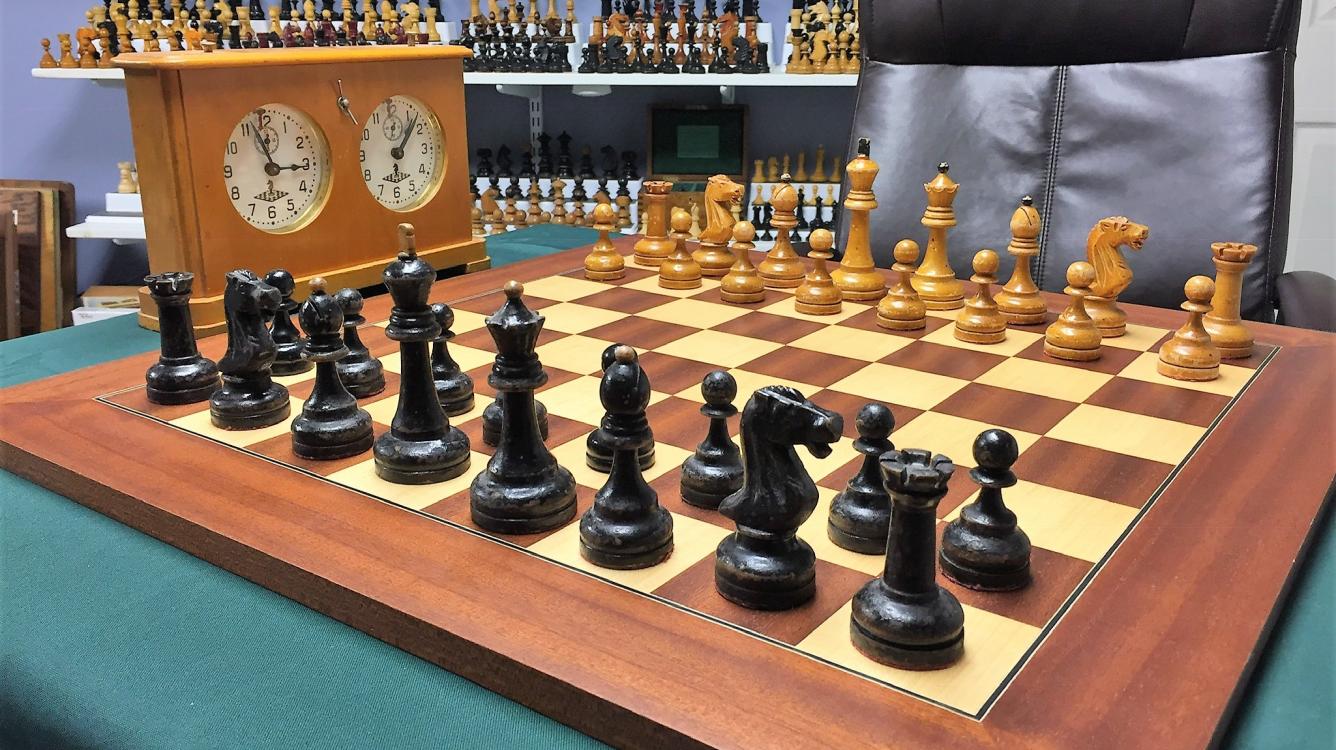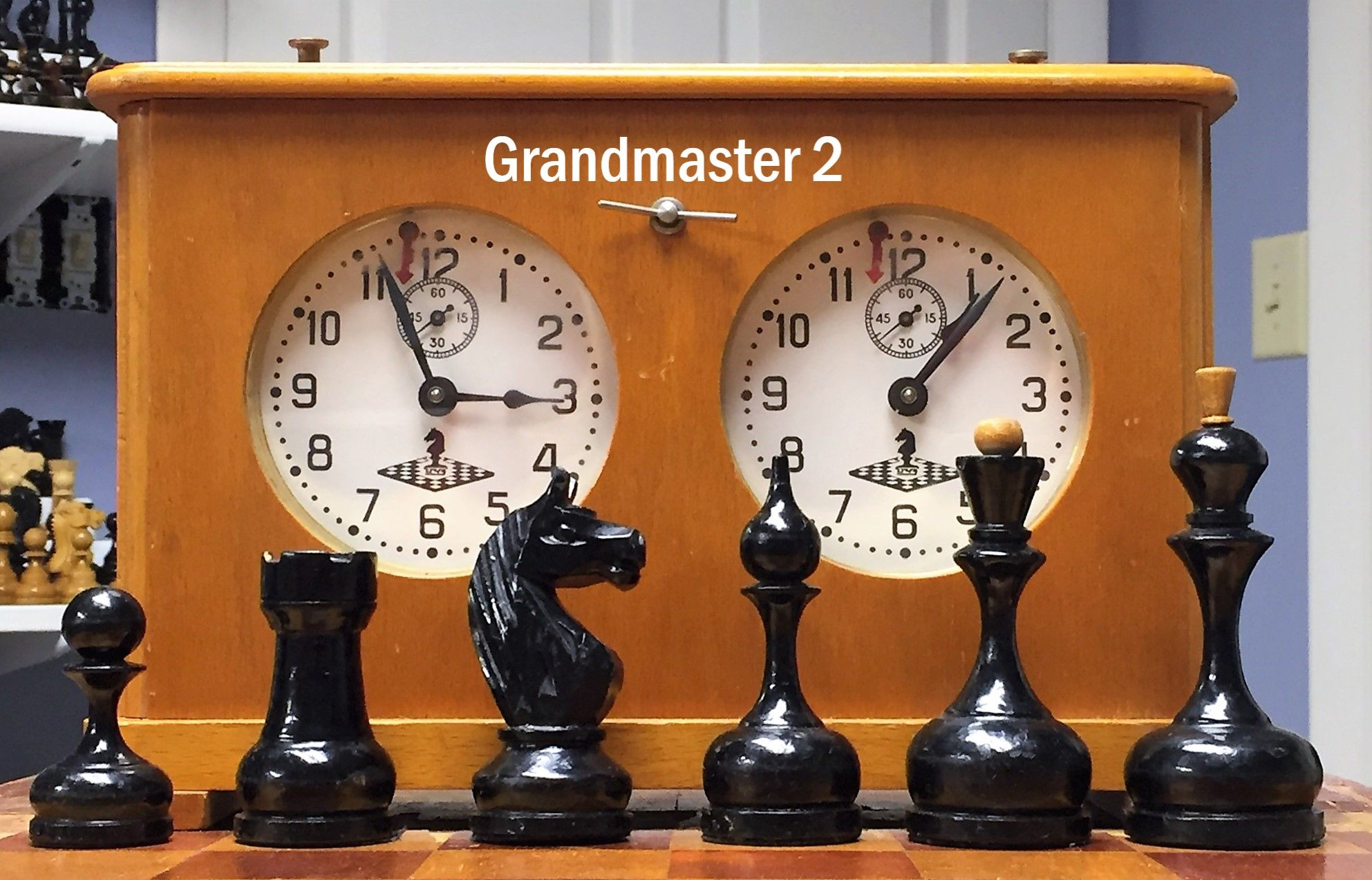
Arlindo Vieira's Four Styles of Soviet Grandmaster Chess Pieces
Welcome to my new blog on Soviet and Russian chess sets. As interest in these Stiefkinder of traditional chess collecting has grown, it has become clear that there is a need for more and better information about them. They were, after all, the chess pieces used in the Soviets' ascent to chess dominance. In April of 2020, I launched a Facebook Group, Shakmatnyye Kollektsionery, to begin to address that need. As of this writing, that group has expanded to 1700 members. This blog intends to reach an audience beyond the Facebook community and to provide more detailed information than the Facebook format allows.
Arlindo Vieira pioneered research into Soviet chess pieces. In 2012, he published what to this day is the single best primer on them, a work that provides base line information and has in many ways set the agenda for those who collect them. It can be seen in its entirety here, and I highly recommend it. https://youtu.be/MXTwxG4N62Y. HIs blog, Xadrez Memoria, contains a number of entries elaborating on sets and issues presented in his video. I commend them to your reading. In future blogs, I will explore Arlindo's other contributions to our knowledge. Today, I want to focus on one narrow topic raised by a contributor to Shakmatnyye Kollektsionery: what is a Grandmaster set and what are the differences between the different types of Grandmaster sets mentioned by collectors?
A Grandmaster, or Grossmeister set is most generally a set that was used at the highest levels of Soviet chess, that is, by Grandmasters. Soviet sets typically did not have names, just as most Soviet consumer products did not have brand names. Instead, chess sets were described by functional categories. Grandmaster sets were used by grandmasters. Tournament sets were for use generally in tournaments. Yunost sets were for students and youth. In Xadrez Memoria, Arlindo describes these GM, or Grandmaster, sets as:
Soviet pieces characteristic of many Clubs, competitions and even simple chess lovers that in a park, or Garden, anywhere in the former Soviet Union used to use them. Almost always these pieces were made with the respective folding board that also served as a box where they were kept (such "anemic" trays of 4.5 - 5cm square for pieces with a King base with 3.5-4 cm!... All of these pieces are very reasonable in size, with the KINGS walking 10-11 cm high... [T]hey are very different sets from each other and have been used in different times… .
Xadrez Memoria, 4 December 2012.
Vieira designates each type of Grandmaster set with a number, 1-4, and dedicates one sub-section of his video to each GM type. He dates the GM1 in the seventies and eighties; the GM2 in the sixties through the eighties; the GM3 goes undated in both the video and the blog; The GM4 is undated, but he describes it as “the last version of this competitive set,” and shows it in use in the mid-eighties. The photographic record provides evidence that each of the four types indeed were used at the highest levels of Soviet Chess.
Within each GM category, there were a number of different sets sharing the same basic style. Some of the differences can be attributed to when or where they were produced, others by the intended audience. Thus each style had better made and finished types that were used at the high levels, and simplified versions that were mass marketed to the millions who played chess. Here are examples of the four types.

This is an example of GM1 pieces from the sixties. They are obviously well-used, not surprising insofar as Vieira describes the GM1 to have been “very popular in chess clubs.” It is a simple design, perfect for mass production. The stem rises almost seamlessly from the base, forming a concave curve that trumpets out to serve as a pedestal, upon which the piece signifier--crown, coronet, miter, or ball--rests. The finials atop the king and queen are made of wood. In later versions, they are made of plastic. The queen's coronet bears no crenellations. The knights are quite simple, comprising a slab with two angular cuts signifying the mane. The knight's back forms a simple C-Curve, whereas the chest is cut to an angular V. The back of the ears continue the upward line of the back. The bishop's miter is a simple tear-shape without a cut. The rook's turret lacks merlons.

The GM2, Vieira's video tells us, is “a very big set, but harmonious and pleasing to touch.” Like the GM1 pieces, the GM2 pieces boast a concave stem that trumpets out to become the pedestal upon which the piece signifiers rest. Unlike the GM1 pieces, the bases are much more bulbous, and the line from base to stem is not one unbroken curve. The queen's coronet has no crenellations. The knights are more complex, with a rounded chest, neck, and head. They share the C-V shape, but the ears protrude upward from the curve transitioning from back to head. The bishop's miter is onion-shaped, and lacks a cut. The rook's turret contains wide but shallow merlons. The early versions, like this one, have wooden finials and an even finish. Later versions from the eighties replaced the wood finials with plastic ones, and the varnish is typically applied unevenly. They were sold in boxes labeled Tournament Chess. Collector Mike Ladzinski, whose handle here is Goodknightmike, has referred to the GM2 as the Bronstein Set in homage to a photo of Bronstein and Tal playing with GM2 pieces.

Arlindo describes the GM3 as “the traditional set of USSR Championship(s).” And, indeed, the photographic record is replete with evidence of the very best of these sets, sometimes called Grandmaster Supremes, being used in USSR Championships. We can see that the GM3s are a markedly different design from those of the GM1 and GM2, much more traditionally Staunton, down to the straight ascension of the stems, the distinct breaks between base, stem, and pedestals, the triple collars, the vestigial cross atop the king's crown, the crenels in the queen's coronet, the bishops’ miter cuts, the merlons of the rooks’ towers, and the S-shaped backs of the more highly carved knights.
Later versions replaced the wooden black knights, crosses, and finials with molded plastic ones. The finishes became more uneven, and the carvings less detailed and precise.

I see the GM4 design as part of the GM3 family, albeit simplified and cheapened. But what remains is the basic Staunton architecture of the GM3. Recognizing them to be closely related to the GM3 pieces, Arlindo tells us that the GM4 pieces are “the last version of this competitive set.” He describes them as “elegan(t) and playable,” but which “made players crazy” when used on boards with squares far too small, a criticism he levies at Soviet sets in general.
In Xadrez Memoria, Vieira observes that the quality of the Grandmaster pieces degraded over time:
[T]he pieces lost quality from the oldest to the most recent ones, and when I say so, the photos prove it in the very simple question of manufacture: they lost detail, care in the details: look at the Towers, the Horses, in the Bishops and what I said ends up coming to the fore.
Xadrez Memoria 4 December 2012.
Indeed, gone from the basic GM3 design are the queen's crenels, the bishop's miter cut, and the rook's merlons. All the crosses, finials, and knights are plastic.
GM4 sets were used in the 1994 Moscow Olympiad. Vieira rightly criticizes the organizers for providing boards that cramped the pieces and garish tablecloths on the playing tables that surely distracted players.
Conclusion
I hope that this brief survey helps clarify what Grandmaster sets are and what differentiates the different types collectors refer to. I look forward to exploring other Soviet sets with you in future posts.
#sovietchesssets
